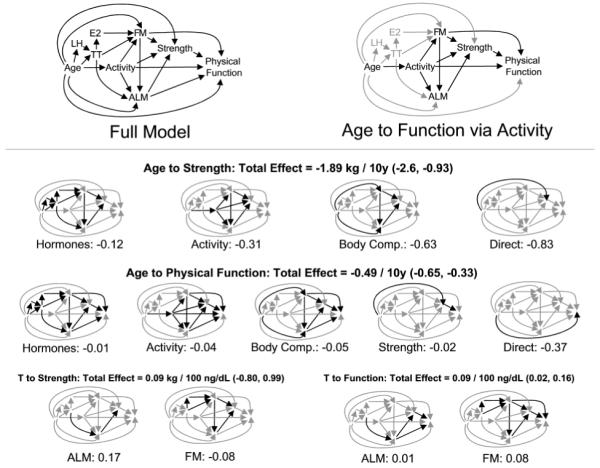FIGURE 1.

Path model depicting multiple paths from age to physical function. Hypothesized associations are depicted in the full model drawing (upper left). The model asserts that the association between age and physical function lies along many potential pathways, for instance through physical activity, which itself may influence body composition, strength, and physical function via direct and indirect means (upper right). Total estimated associations (displayed here accompanied by 95% confidence intervals) between age or testosterone and downstream outcomes may be decomposed into components accounted for by the different covariate groups (smaller drawings). The first row of these depicts the model’s decoupling of the influence of age on strength into components lying along the hormonal pathway (including portions mediated by hormones’ influence on body composition), physical activity (including portions mediated by the relation between activity and body composition), body composition (discounting the effects that pass through it via the hormonal and physical activity mechanisms), and the residual, “direct” association of age with strength that may be obtained from Table 5. In this way the model demonstrates that while much of the association between age and strength can be accounted for by the combined influences of hormones, activity, and body composition, a substantial direct association remains. All of these factors combined account for a relatively small proportion of the association between age and physical function. Meanwhile, the positive association between testosterone and strength as mediated by lean mass is partially offset by the negative associations mediated by fat mass, so that the overall relation between testosterone and strength is non-significant (lower left). At the same time, the bulk of the significant positive association between testosterone and physical function appears to be mediated by the negative association between fat mass and testosterone (lower right). Abbreviations: appendicular lean mass (ALM), estradiol (E2), fat mass (FM), luteinizing hormone (LH), testosterone (TT).
